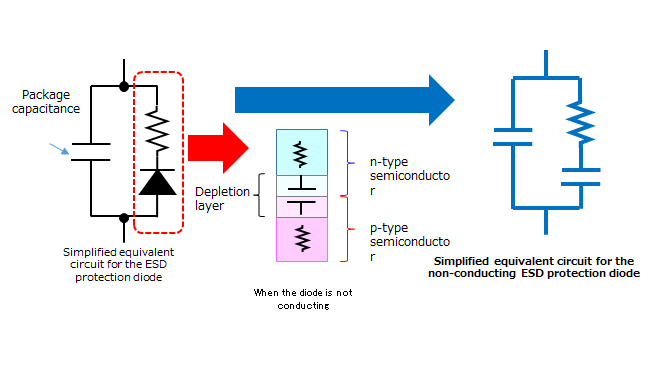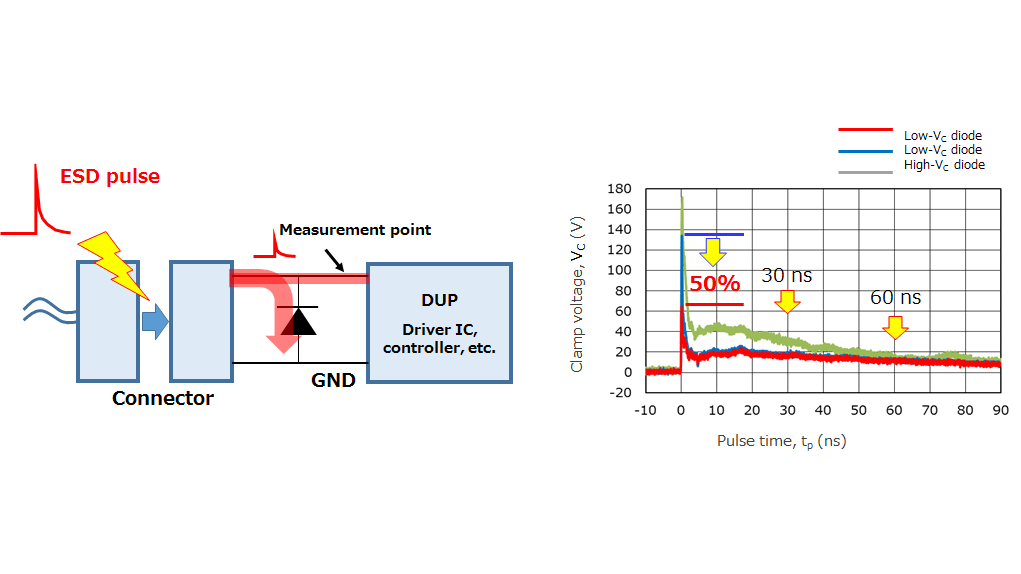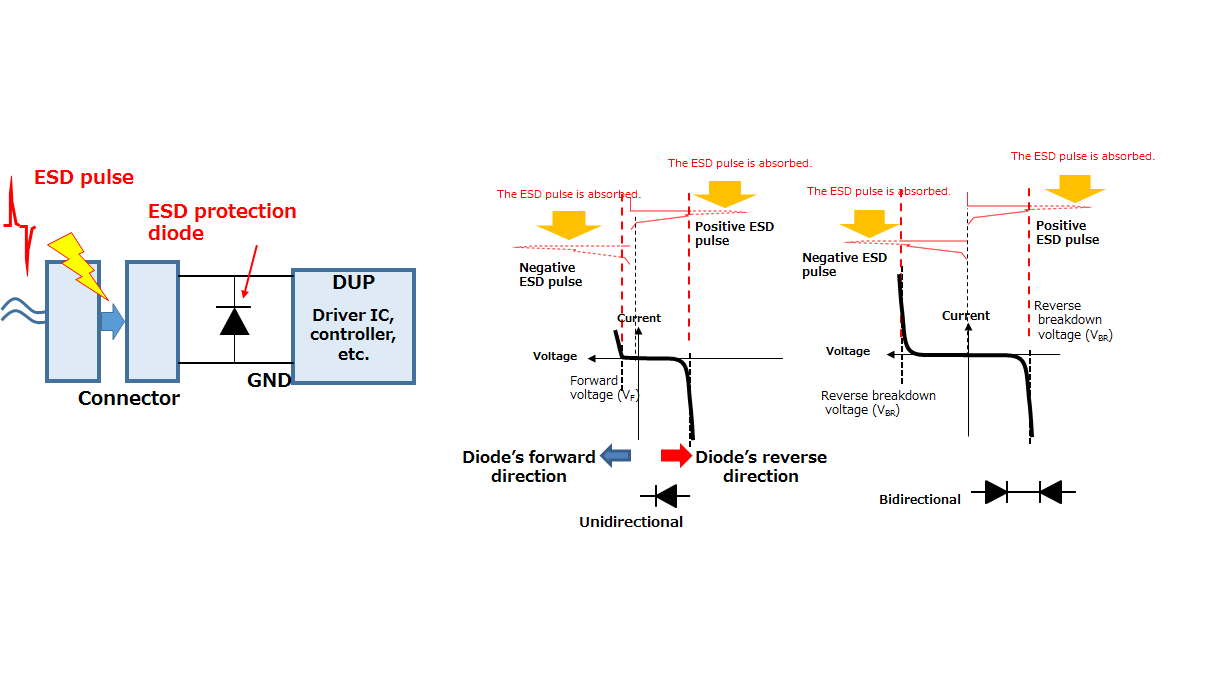- General Top
- SEMICONDUCTOR
- STORAGE
- COMPANY
-
My ToshibaSemicon
- Semiconductor Top
-
ApplicationsAutomotive
Body Electronics
xEV
In-Vehicle Infotainment
Advanced Driver-Assistance Systems (ADAS)
Chassis
IndustrialInfrastructure
BEMS/HEMS
Factory Automation
Commercial Equipment
Consumer/PersonalIoT Equipment
Healthcare
Wearable Device
Mobile
Computer Peripherals
-
ProductsAutomotive Devices
Discrete Semiconductor
Diodes
Transistors
Logic ICs
Analog Devices
Digital Devices
Wireless Devices
※
: Products list (parametric search)
Power SemiconductorsSiC Power Devices
※
: Products list (parametric search)
Isolators/Solid State RelaysPhotocouplers
Digital Isolators
Solid State Relays
Fiber Optic Transmitting Modules
※
: Products list (parametric search)
MOSFETsIGBTs/IEGTsBipolar Transistors※
: Products list (parametric search)
Diodes※
: Products list (parametric search)
MicrocontrollersMotor Driver ICsIntelligent Power ICs※
: Products list (parametric search)
Power Management ICsLinear ICs※
: Products list (parametric search)
General Purpose Logic ICsLinear Image SensorsOther Product ICsOther Product ICs
※
: Products list (parametric search)
-
Design & Development
-
Knowledge
- Where To Buy
- Part Number & Keyword Search
- Cross Reference Search
- Parametric Search
- Stock Check & Purchase
This webpage doesn't work with Internet Explorer. Please use the latest version of Google Chrome, Microsoft Edge, Mozilla Firefox or Safari.
require 3 characters or more. Search for multiple part numbers fromhere.
The information presented in this cross reference is based on TOSHIBA's selection criteria and should be treated as a suggestion only. Please carefully review the latest versions of all relevant information on the TOSHIBA products, including without limitation data sheets and validate all operating parameters of the TOSHIBA products to ensure that the suggested TOSHIBA products are truly compatible with your design and application.Please note that this cross reference is based on TOSHIBA's estimate of compatibility with other manufacturers' products, based on other manufacturers' published data, at the time the data was collected.TOSHIBA is not responsible for any incorrect or incomplete information. Information is subject to change at any time without notice.
require 3 characters or more.
3-2 Key characteristics for protection against ESD events(1)
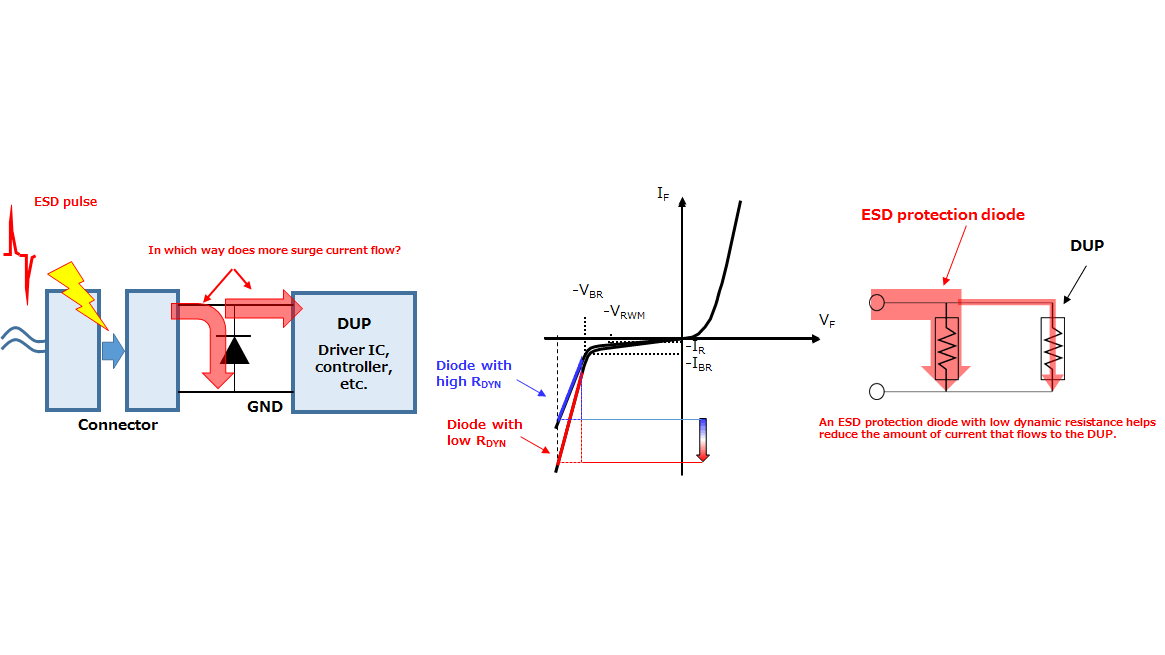
3-2(1) Low dynamic resistance (RDYN)
In the event of an ESD strike, the ESD current flows to both the ESD protection diode and the device under protection (DUP). It is important to reduce the current flowing to the DUP (i.e., increase the current shunted through the ESD protection diodes).
Nowadays, the datasheets for ESD protection diodes show their dynamic resistance (RDYN). RDYN is the slope of the VF–IF curve in reverse conduction mode. In the event of an ESD strike, ESD protection diodes with lower dynamic resistance conduct more current at a given voltage.
From the connector side, the impedances of the ESD protection diode and the DUP can be regarded as being connected in parallel. If the ESD protection diode has low impedance (i.e., dynamic resistance), most of the surge current is shunted through the ESD protection diode, reducing the current that flows to the DUP and therefore the possibility of its destruction.
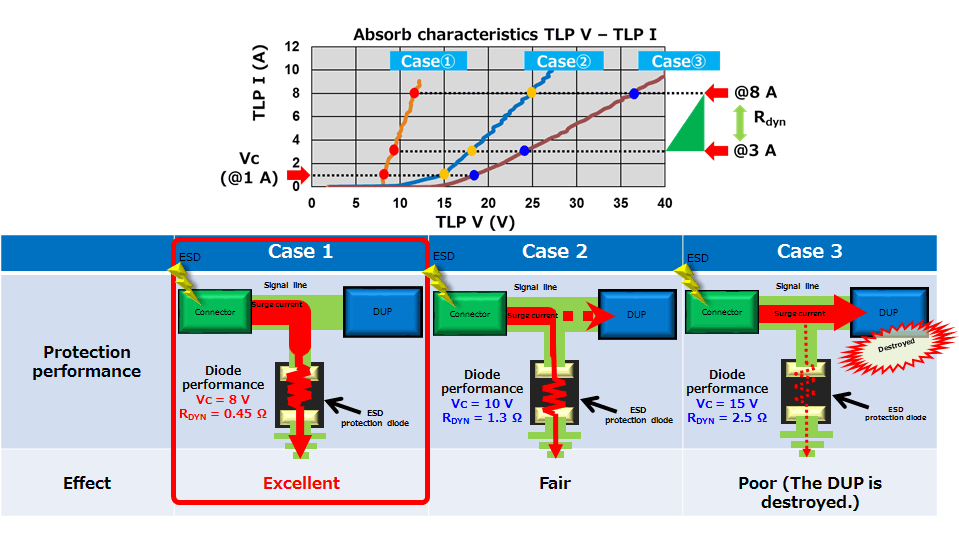
Figure 3.9 illustrates how to calculate dynamic resistance (RDYN) of an ESD protection diode and where surge current flows in the event of an ESD strike. If the ESD protection diode has low impedance (i.e., dynamic resistance), most of the surge current is shunted to GND through the ESD protection diode, reducing the current that flows to the DUP. Therefore, the ESD protection diode helps prevent the destruction of the DUP due to an ESD strike. A transmission line pulse (TLP) test applies short pulses with a duration on the order of nanoseconds to study the current-voltage (I-V) characteristics of a diode based on the current-voltage relationship over time. In the following graph, TLP I and TLP V represent current and voltage, respectively.
3 Key electrical characteristics of TVS diodes (ESD protection diodes)
- 1 What is a TVS diode (ESD protection diode)?
- 2 Basic operations of TVS diodes (ESD protection diodes)
- 4 Selection guidelines for TVS diodes (ESD protection diodes)
- 5 Layout considerations for TVS diodes (ESD protection diodes)
- 6 Absolute maximum ratings of TVS diodes (ESD protection diodes)
- 7 Electrical characteristics of TVS diodes (ESD protection diodes)
Related information
- Product Web Page
TVS Diodes (ESD protection diodes) - Applidcation Notes
Diode - FAQ
TVS diodes (ESD protection diodes) - Parametric searches for all Toshiba TVS diode (ESD protection diodes) produ cts are available here:
Parametric search - Stock Check & Purchase Toshiba TVS diode (ESD protection diodes) here
Stock Check & Purchase


